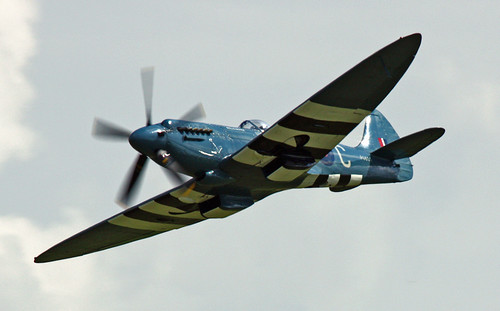
AN AIRCRAFT DESIGNERS INSIGHT: IN THE WORDS OF AN ENGINEER (TRANSLATED FROM SLOVAKIAN ENGLISH)
The Dynamic WT9 is the work of Tadeas Wala. As the Dynamic WT9 Model Number suggests, it is his ninth project.
The Dynamic WT9 is one of the best light aircraft around, but there are still things we can do to improve it. To improve the flying qualities we have developed a new wing with a winglet. This new model was unveiled at the AERO exhibition in Freidrichshafen earlier this year. Secondarily, not only does the new winglet look good but primarily, it increases the capabilities of the aircraft throughout the entire LSA envelope.
As well as making the Dynamic more stable tests have shown that the winglets increase the force reduction in aileron control and faster directional responses about the roll axis. The stall characteristics of the Dynamic have also been improved by the new winglet design. Both the maximum and cruising speeds have been unaltered with the addition of the winglet. The new winglet was put through flight and strength tests passing both. The Slovak Civil Aviation Authority, CAA, has approved the new wing and winglet design with German LBA and Czech authorities likely to follow suit in the near future.
Development and production of the all composite WT9 Dynamic airplane is by far the biggest project Aerospool has undertaken to date. Although the Dynamic WT9 with its current weight, still belongs to the Ultralight category (in Europe), it by far exceeds this category with its qualities. First of all it is due to its advanced structure, in which the most modern aircraft materials are used, such as carbon and polyurethane sandwiches. It is also due to the experience the company gained from many years of production of subassemblies for top quality gliders. This all guarantees top quality of production, low weight, and excellent flight characteristics. The Dynamic is offered to customers in both fixed and retractable gear, as one of the very few airplanes that do, in the UL category. And even for the base price, each customer will get a ready-to-fly aircraft equipped with a Rotax 912UL 80 H.P. power plant. The long list of options and accessories enables everybody to create an airplane according to his/her needs and desires. The empty weight of the airplane is dependent of the equipment added; it starts as low as 265kg or 583 lbs. And for those who prefer to build their own airplane themselves, Aerospool offers an aircraft kit.
Thanks to the aerodynamic characteristics and powerful engine, the Dynamic proved itself also as a useful tow airplane with an excellent climb rate. Tests confirmed that the Dynamic enables towing even the heaviest two seat gliders such as ASH-25 or Duo Discus , while maintaining a high level of performance. The quality of the airplane and its attractive look is proved not only by interest of customers all around the world but also by the price.
The foundation of each company dealing with aviation production is to prove their organizational and quality-control system. The proofs of these labors are found in the certificates and approvals for production and aircraft repairs from civil aviation authorities. Aerospool has several of such documents. These are from the CAA of the Slovak Republic: Approval certificate for production No. SK.21G.0002, (addition to the approval certificate) and Approval certificate for maintenance No. SK.MF.001 (addition to the approval certificate). CAA of Czech Republic issued the Approved aircraft repair station acceptance certificate No. 181-01/2 and German Luftfahrt Bundesamt Braunschveig awarded Aerospool with the Genehmigung als Luftfahrhrttechnischer Betrieb Nr. II-A197 l...). It was necessary not only to receive these certificates but also to prove them. Therefore there are annual audits on-site at the Aerospool factory performed by officers of the aviation authorities that issued the certificates necessary for the aviation production and repairmen facility status. This is our warranty that the pilots who operate our aircraft will have the best quality product from Aerospool. We are not only engineers but pilots too.
BACKGROUND:
The roots of Aerospool company reach to the break years 1990-91, when a team of Prievidza air club pilots started to work on the WT3 glider prototype. On the basis of their gained skills they decided to form a company where their dreams about airplane production would come true. The journey to do this was not simple. By all means, the first product that rolled out from Aerospool hall was intended for pilots. It was a fiberglass transport trailer, the TV-1, a 15 meter span glider transport, and it was Aerospool who created the molds and forms also. Later the TV-2 trailer was added, which was/ and still is intended for two seat gliders. Until now, more than 100 trailers of both types have been delivered to customers all around the world. Besides that Aerospool was also involved in model and prototype production for other "non-aeronautical" fiberglass products. For example bodywork parts for tractors, personal or transport vehicles, horse transport trailers and industrial fluid tanks, etc. Introduction in Aerospool began by simple repairs of composite gliders. Production of parts for the following project with Schempp-Hirth Flugzeugbau company. Thanks to that, Aerospool obtained the knowledge and know-how for general overhauls of composite glider surfaces and various other damages, whose services have been utilized by more than 200 glider owners up to and including the present. Gradually over time Aerospool began producing stabilizers, elevators and winglets for Ventus-2c gliders, as well as the pre-assembly, painting and final assembly of these gliders. More to follow. Please stay tuned as we provide more information to you about this exciting new LSA composite airplane from Aerospool Spol SRO.



















